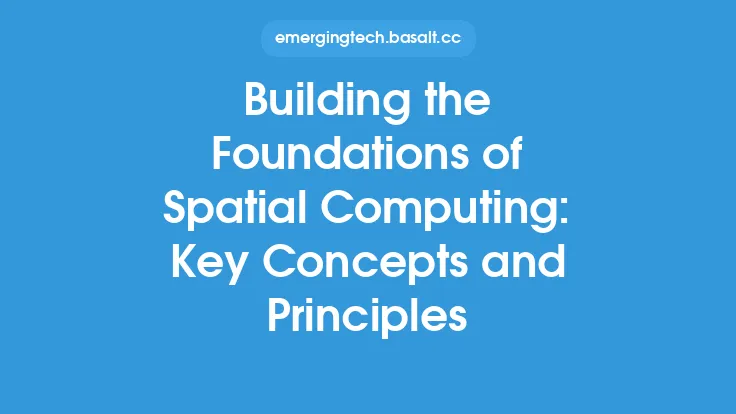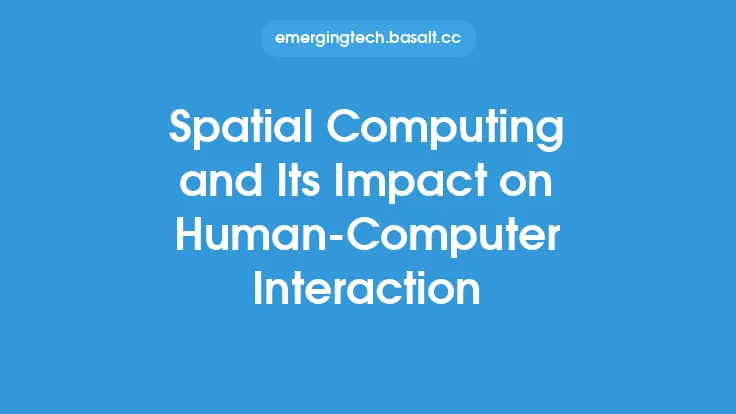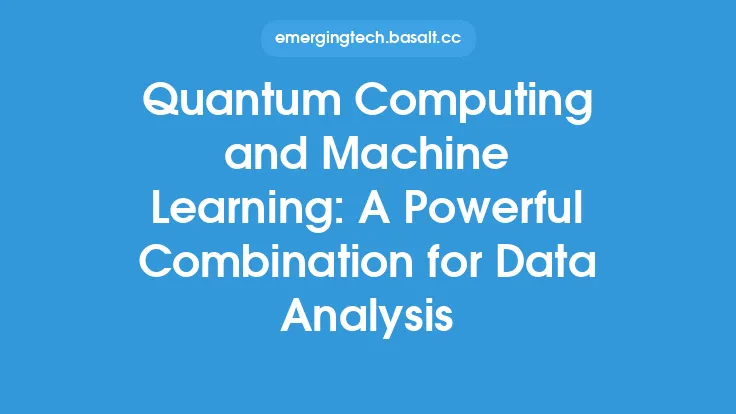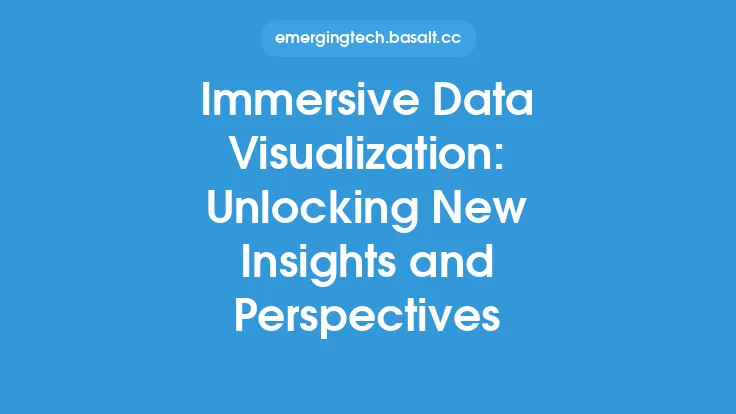The ability to understand and interpret complex information has become a crucial aspect of various fields, including science, engineering, and business. With the rapid growth of data generation and collection, it has become increasingly important to develop effective methods for visualizing and analyzing this information. Spatial computing, a technology that enables the creation of immersive and interactive environments, has emerged as a powerful tool for data visualization. By leveraging spatial computing, users can gain new insights into complex data sets, identify patterns and relationships, and make more informed decisions.
Introduction to Spatial Computing and Data Visualization
Spatial computing is a broad term that encompasses a range of technologies, including virtual reality (VR), augmented reality (AR), and mixed reality (MR). These technologies enable the creation of immersive and interactive environments that simulate real-world experiences. In the context of data visualization, spatial computing allows users to visualize complex data sets in a more intuitive and engaging way. By using spatial computing, users can create interactive 3D models, simulate real-world scenarios, and analyze data in a more immersive and interactive environment.
Key Concepts and Principles
To understand how spatial computing can be used for data visualization, it is essential to grasp some key concepts and principles. One of the primary concepts is the idea of spatial mapping, which involves mapping data to a 3D space. This can be done using various techniques, including dimensionality reduction, clustering, and spatial analysis. Another important concept is the use of interactive visualization tools, such as 3D graphics, virtual reality, and augmented reality. These tools enable users to interact with data in a more immersive and engaging way, allowing for a deeper understanding of complex relationships and patterns.
Techniques for Spatial Data Visualization
There are several techniques that can be used for spatial data visualization, including 3D modeling, virtual reality, and augmented reality. 3D modeling involves creating interactive 3D models of data, which can be used to visualize complex relationships and patterns. Virtual reality (VR) involves creating immersive and interactive environments that simulate real-world experiences. Augmented reality (AR) involves overlaying digital information onto the real world, allowing users to interact with data in a more intuitive and engaging way. Other techniques include spatial analysis, which involves analyzing data in relation to its spatial context, and dimensionality reduction, which involves reducing the complexity of high-dimensional data sets.
Applications of Spatial Computing and Data Visualization
Spatial computing and data visualization have a wide range of applications across various fields, including science, engineering, and business. In science, spatial computing can be used to visualize complex data sets, such as climate models, genetic data, and medical imaging data. In engineering, spatial computing can be used to design and simulate complex systems, such as buildings, bridges, and mechanical systems. In business, spatial computing can be used to visualize customer data, sales data, and market trends, allowing for more informed decision-making.
Benefits and Challenges
The use of spatial computing and data visualization offers several benefits, including improved understanding of complex data sets, increased engagement and interaction, and enhanced decision-making. However, there are also several challenges associated with the use of spatial computing and data visualization, including the need for specialized hardware and software, the complexity of data preparation and analysis, and the potential for information overload. To overcome these challenges, it is essential to develop effective methods for data preparation and analysis, as well as intuitive and user-friendly interfaces for interacting with data.
Future Directions
The field of spatial computing and data visualization is rapidly evolving, with new technologies and techniques emerging on a regular basis. Some of the future directions for spatial computing and data visualization include the development of more advanced virtual and augmented reality technologies, the integration of artificial intelligence and machine learning algorithms, and the application of spatial computing to new fields and domains. As the field continues to evolve, it is likely that we will see new and innovative applications of spatial computing and data visualization, leading to a deeper understanding of complex information and more informed decision-making.
Conclusion
Spatial computing and data visualization offer a powerful tool for understanding complex information. By leveraging spatial computing, users can gain new insights into complex data sets, identify patterns and relationships, and make more informed decisions. As the field continues to evolve, it is likely that we will see new and innovative applications of spatial computing and data visualization, leading to a deeper understanding of complex information and more informed decision-making. Whether you are a scientist, engineer, or business professional, spatial computing and data visualization have the potential to revolutionize the way you work with data, and it is an exciting time to be a part of this rapidly evolving field.





